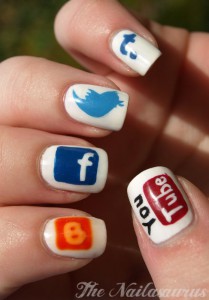The Gendered Politics of Digital Brand Labor

This post is part of a partnership with the International Journal of Cultural Studies, where authors of newly published articles extend their arguments here on Antenna.
Amid the flood of actors, directors, and reporters congregating in Park Springs, Utah, for the 2015 Sundance Film Festival was a cadre of social media influencers that New York Times writer Sheila Marikar designated the “new celebrity crowd.” With thousands—even millions—of social media followers each, these fashion bloggers, YouTube vloggers, and Instagrammers were being wooed by advertisers and publicists at the Sundance gifting suites, where they were furnished with designer clothes, shoes, tech accessories, and more. In exchange, the social media personalities were expected to share photos and reviews of the Sundance swag with their followers, part of a mutual incentive system that increasingly structures digital communication in the so-called “attention economy.”
Although gender was scarcely mentioned in the NYT article, the feminized nature of the system was patently clear: the majority of the social media personalities mentioned were female, a disparity which was highlighted by a comment from a PR rep, “When it comes to the sales, the digital girls are making those. We see higher conversions off those girls than we do with celebrity placement that we might have paid money for” (italics added for emphasis). And save for the male chief executive of a talent agency, three of the four publicists quoted were women. This brings to mind Ann Friedman’s provocation last year about the gendered dimension of the public relations profession, which she said is treated like “a pink ghetto.”
The article also drew attention to the highly gendered discourses of affective or emotional labor, particularly in the context of the promotional “love fest.” Justine Ezarik, more commonly known as iJustine, gushed to Marikar, “I love products, and I love sharing if I love something. Like, you can probably guarantee that it’s going to be posted, especially if I love it.” For retailers and advertisers, an endorsement by a social media influencer like Ezarik enables them to rise above the flood of ubiquitous marketing messages through a seemingly authentic brand promotion.
 While the NYT article profiled those faring quite well from their social media promotions, legions of other young women engage in similar brand work—without monetary compensation. Often, these creative aspirants are seduced by the infectious rhetoric of “dream jobs” and “passion projects”; indeed, the notion of doing what you love has become so central to contemporary career narratives that scholar and Jacobin contributor Miya Tokumitsu declared it the “unofficial work mantra of our time.”
While the NYT article profiled those faring quite well from their social media promotions, legions of other young women engage in similar brand work—without monetary compensation. Often, these creative aspirants are seduced by the infectious rhetoric of “dream jobs” and “passion projects”; indeed, the notion of doing what you love has become so central to contemporary career narratives that scholar and Jacobin contributor Miya Tokumitsu declared it the “unofficial work mantra of our time.”
My recent International Journal of Cultural Studies article, “The Romance of Work: Gender and Aspirational Labour in Digital Culture Industries,” brings gender politics to the fore of discussions about using social media to pursue one’s labor of love. Based on a study of female social media producers, I contend that digital labor scholars must take seriously the meaning-making activities of participants, especially female content creators.
Drawing upon in-depth interviews with eighteen fashion bloggers, beauty vloggers, and DIY stylists—as well as an analysis of social media professionalization resources—I argue that these young women are engaged in “aspirational labor”: a highly gendered form of (mostly) uncompensated work that 1) amateur participants believe has the potential to “pay off” in terms of future economic and social capital; and 2) that keeps female content creators immersed in the public circulation of commodities. Like individuals performing social roles through aspirational consumerism—for instance, purchasing luxury goods to mark oneself as a member of elite social strata—aspirational laborers seek to mark themselves as creative producers who will one day be compensated for their craft—either directly or through employment in the culture industries.
My analysis explores three salient features of aspirational labor: narratives of authenticity and realness; the instrumentality of affective relationships; and entrepreneurial brand devotion. The latter, which describes the “new celebrity” Sundance promotions, reaffirms a cultural history of gendered social sharing surrounding consumer goods. Scholars Crystal Abidin and Eric C. Thompson aptly refer to the presentation of intimacy that takes place at the intersection of femininity and commercialism as “persona intimacy.”
As I show in the article, many individuals try to curry favor with brands by freely publicizing their products and messages; however, the reward system for these aspirants is highly uneven. Only a few of these young women rise above the din to achieve the level of digital stardom associated with internet personalities like Ezarik. The rest, meanwhile, remain suspended in the highly gendered consumption and promotion of branded goods. Despite such unevenness, I argue that aspirational labor does “pay off” in one important way: it has successfully romanticized work at a moment when its conditions and affordances are evermore precarious, time-intensive, underpaid—and decidedly unromantic.
[For the full article, see Brooke Erin Duffy, “The Romance of Work: Gender and Aspirational Labour in the Digital Culture Industries,” forthcoming in International Journal of Cultural Studies. Currently available as an OnlineFirst publication: http://ics.sagepub.com/content/early/2015/02/25/1367877915572186.abstract]



Interesting points! Look forward to reading entire article.
Have you considered the possibility that some of these digital laborers are “currying favor” with brands precisely because that’s where the opportunities are? Legacy media outlets (journalism, TV, film, etc) have very high barriers to entry for outsiders, whereas advertisers are constantly trawling for “influencers” among their target markets, and so brands may offer these digital laborers more opportunities to grow audiences. Sometimes advertisers are more willing to experiment with new talent than content companies!
Were you able to find a comparable group of male social media influencers working with brands to suss out how much of this is actually gendered and how much is new media labor conditions affecting all potential social media influencers?
Thanks so much for the terrific points and provocations! I certainly agree that these digital laborers understand advertising promotions as a way to gain access to the so-called glamour industries of media & advertising given traditional difficulties associated with “breaking in” to these fields. My participants articulated their involvement as “portfolio-building” or a platform to “get discovered” by aligning themselves with corporate brands. However, one of the problems I see is that most of those who successfully translate these one-off experiences into actual professional successes come from a position of relative privilege (whether by existing social or economic capital). Of course, there are always exceptions…
I interviewed a small number of male bloggers and have heard about comparable work with sports bloggers (by T.C. Corrigan). However, my critique stems more from the ways in which gender is constructed (both industrially and historically—specifically women’s work as unwaged) than numbers of female digital laborers versus males. But the short answer: yes, I believe males can be aspirational laborers too!
Yes, as to your first point, those who succeed in breaking in often already have existing social or other capital–but isn’t that true for all cultural industries?
How much of this unpaid labor is just par for the course for all cultural industries? Dancers, actors, and novelists, for example, have traditionally performed unpaid labor to break in to the field. How can we best analyze this phenomenon not as a new development but as part of continuing process of how cultural industries function?
Of course it’s impossible to quantify the amount of unpaid labor or the breakdown of female/male ratios, so that is not what I’m suggesting we do. I am suggesting that our analysis of digital labor should also be careful about attributing phenomenon (such as unpaid labor) primarily to gender or medium since it is prevalent among all. It’s the old correlation/causation problem!